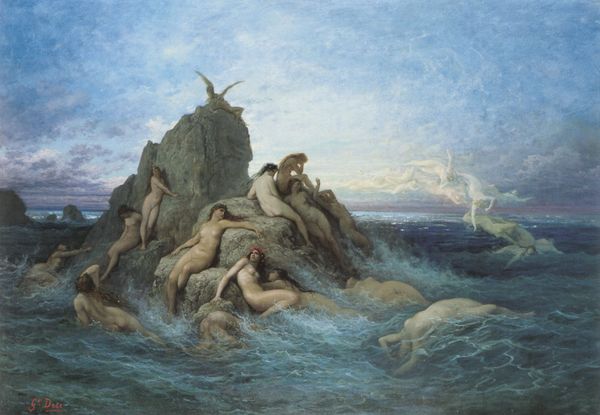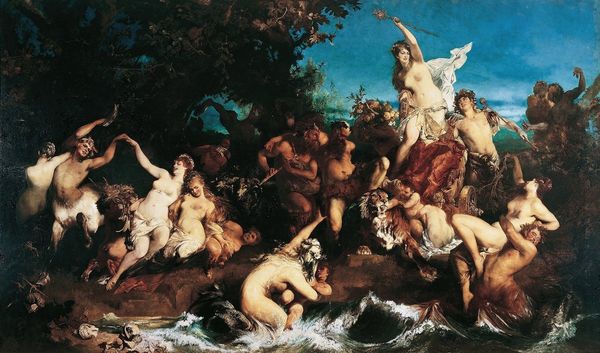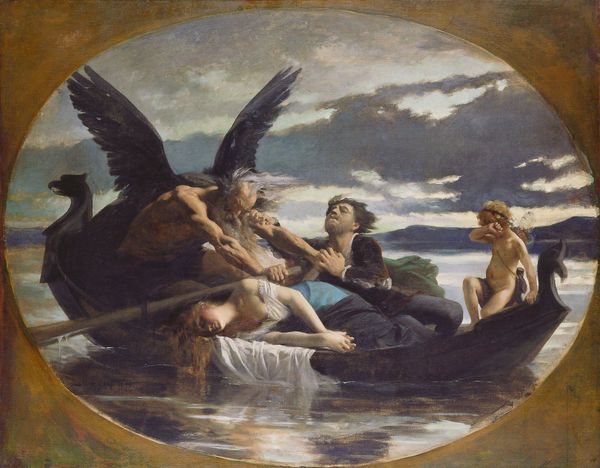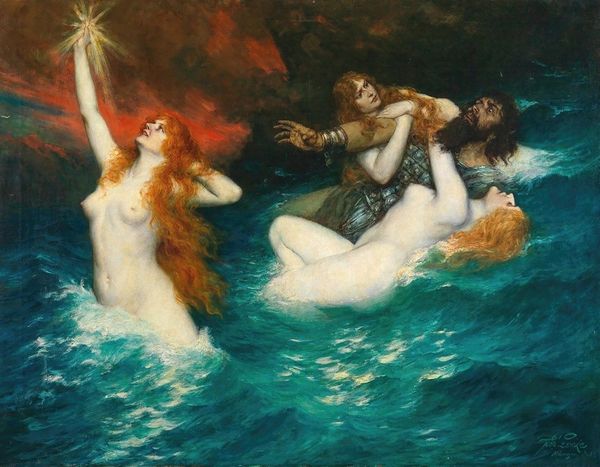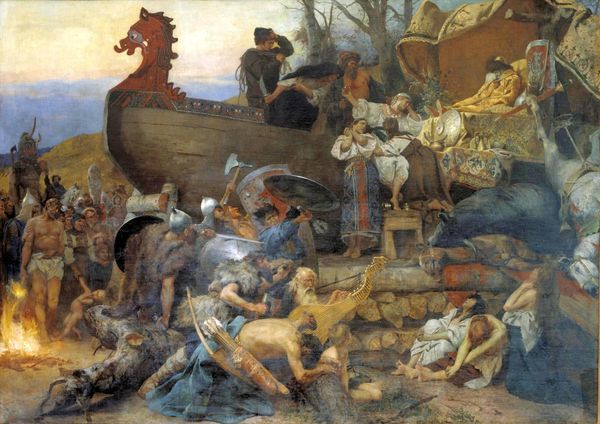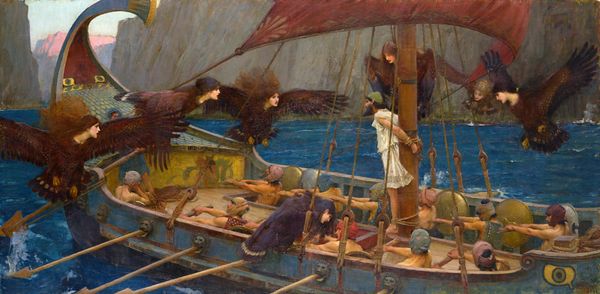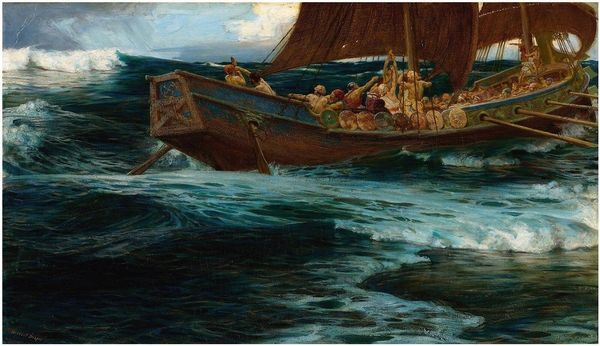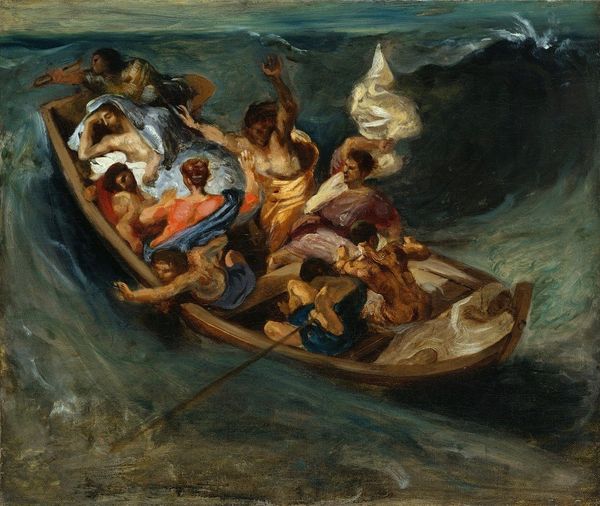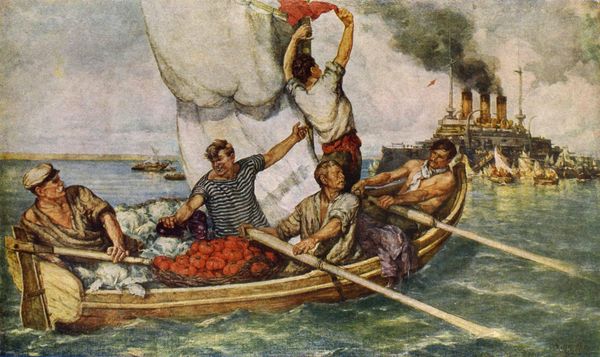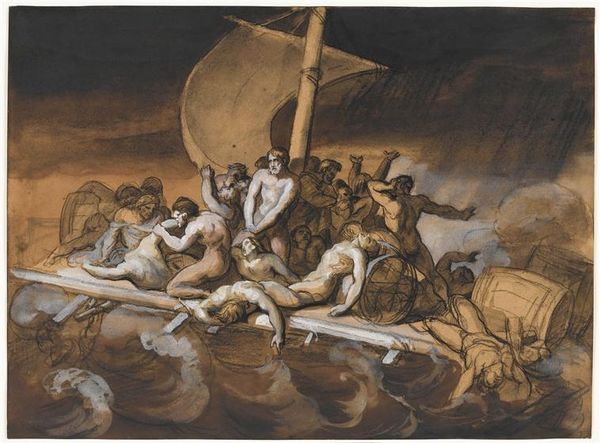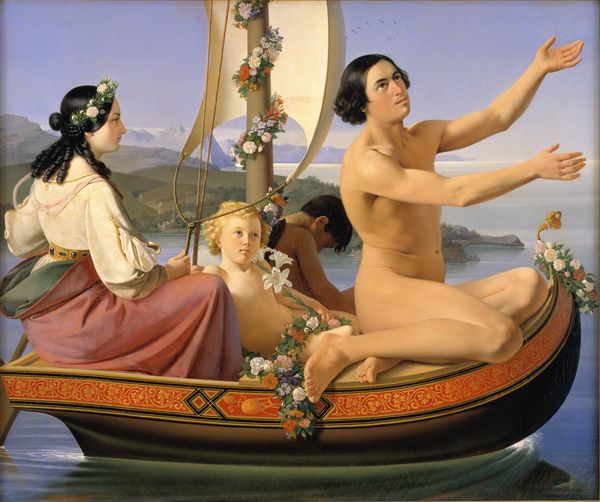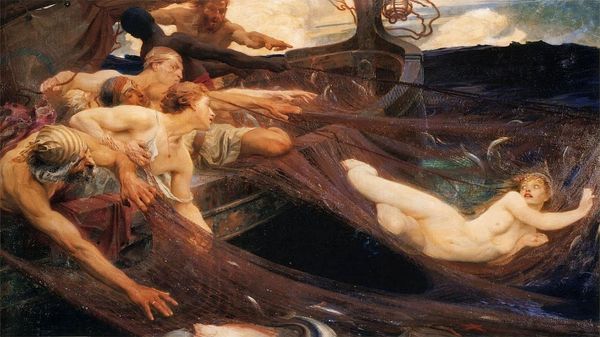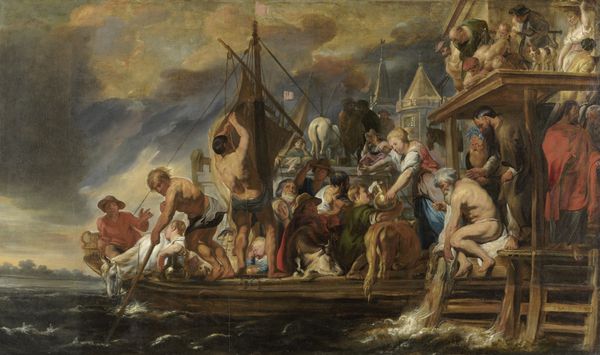
Copyright: Public Domain: Artvee
Herbert James Draper painted "Ulysses and the Sirens" in the late 19th century, a period when artists frequently revisited classical myths to explore contemporary themes. Here, we see Ulysses, bound to the mast, his face contorted as he strains to hear the sirens’ deadly song. Draper, an established artist within the British art establishment, uses the mythological scene to perhaps comment on the seductive dangers lurking beneath the surface of Victorian society. The sirens themselves, depicted as alluring, nude women, contrast sharply with the muscular, striving male figures, reflecting the era's complex attitudes towards female sexuality and its perceived threat to masculine control. By examining exhibition records, critical reviews, and social histories of the period, we can begin to unravel the complex meanings embedded within this painting. Art history reminds us that artworks are not simply aesthetic objects but cultural artifacts, shaped by the social, political, and institutional forces of their time.
Comments
No comments
Be the first to comment and join the conversation on the ultimate creative platform.
